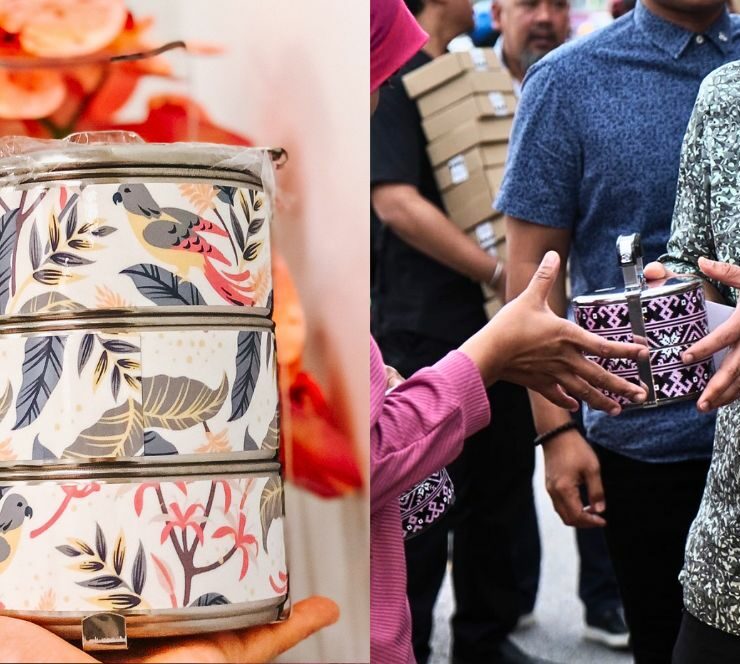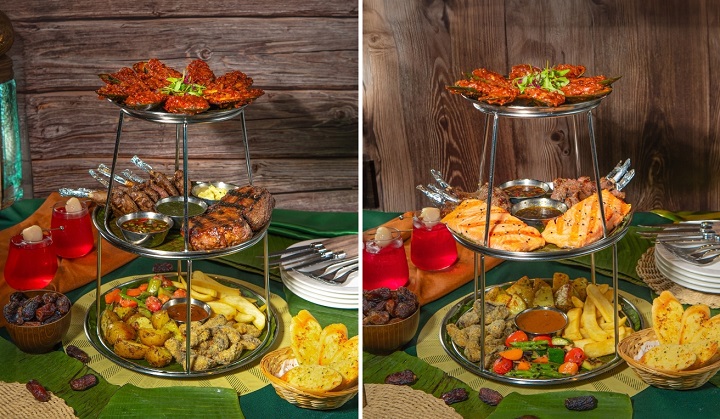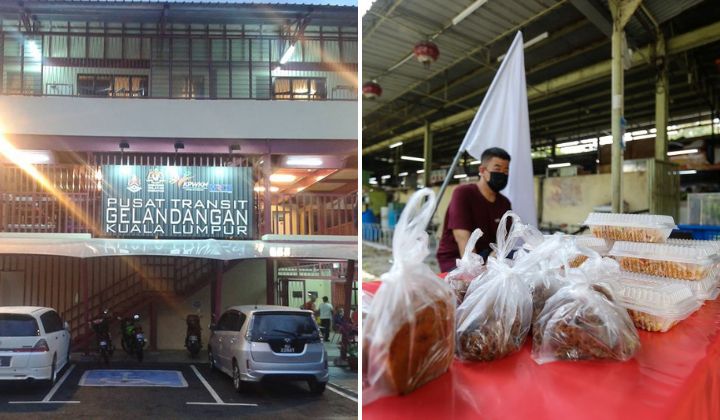Do You Know Where Bubur Lambuk Came From? Let’s Get Down To History
As a Ramadan staple, Bubur Lambuk is usually distributed by the mosque or surau during the month of Ramadan.
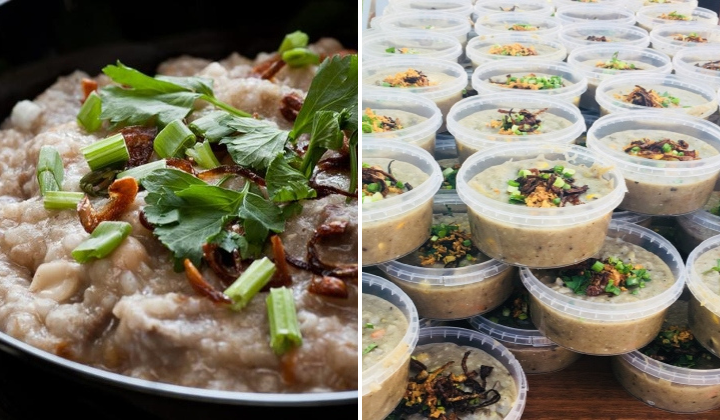
Subscribe to our Telegram channel for the latest stories and updates.
One of the staple food during the holy month of Ramadan is the quintessential Bubur Lambuk, a traditional rice porridge or congee with a plethora of local spices and veggies.
It is usually eaten while it’s still hot for a more appetizing kick. After dates, Muslims would generally break their fast first with this soft porridge so it won’t strain their stomachs.
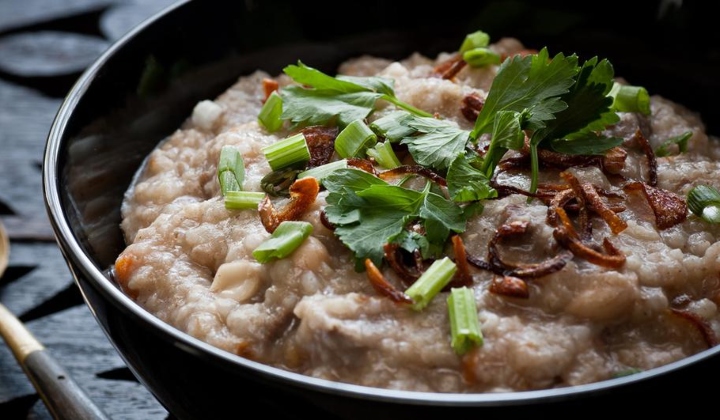
Some mosques, organizations and communities will frequently give away Bubur Lambuk to the public throughout the month of Ramadan. They would usually cook this together (gotong-royong) and then distribute them to the poor and anyone who wants it.
The most popular Bubur Lambuk in KL is undoubtedly the Kampung Baru one. But did it truly originate there? From when? Let’s go back in time for a quick history lesson on Bubur Lambuk.
The origin of Bubur Lambuk
In many parts of the world, bulk cooking of rice porridge or congee is made when there’s a rice harvest ceremony or during religious events. So this part initially came to Malaysia long ago in the times of animism to Buddhism.
Even when Islam came to Tanah Melayu through the Terengganu Batu Bersurat (Inscription Stone) around 1303, the culture of making rice porridge during celebrations still lasts. And so they would make it every year when Ramadan comes.
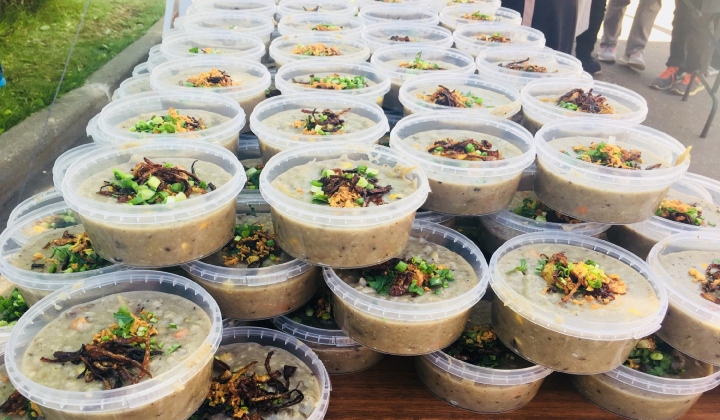
But some sources say specifically that Bubur Lambuk existed in the 15th century during the Melaka Malay Sultanate when Parameswara or his Islamic name, Sultan Iskandar Shah received a visit from Emperor Hun Jen from Cambodia.
Terengganu was then under Melaka so the Sultan found this recipe intriguing, especially when Emperor Hun Jen made a request to prepare a meal that was easy to swallow, tasty and nutritious.
That’s how this dish became popular in Melaka, especially when religious preachers from Terengganu opened a new mosque or surau.
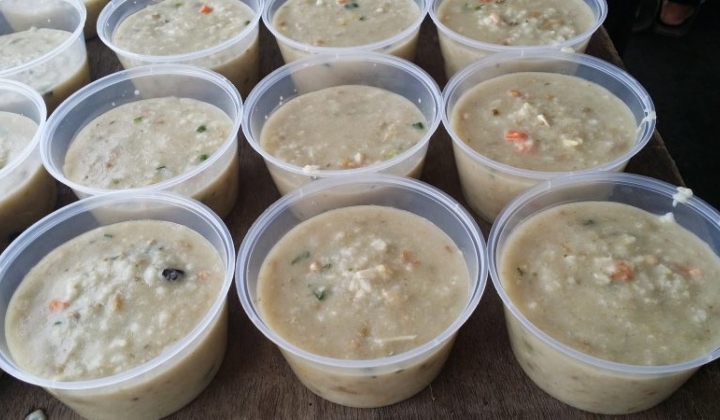
Another source says that Bubur Lambuk actually was brought to Kampung Baru, Kuala Lumpur. And that’s the start of the Kampung Baru Masjid Jamek Bubur Lambuk. The spices and ingredients used to make this particular dish were written by a Pakistani individual named Said Benk around the 1950s.
Said came up with this recipe around 1949 and used to make this dish in small quantities, just enough for people to come to pray at the mosque. Before he died, the recipe was passed on to the mosque’s imam (leader) at the time, Mohd Tahir Jaafar. Said also gave trust to the imam to make this meal as a staple iftar comfort food during Ramadan and should be distributed to the public. Since then, the recipe has been guarded safely by the members of the mosque.
It has now been more than 70 years and the Kampung Baru Masjid Jamek version of Bubur Lambuk remains one of the popular and sought-after porridge during Ramadan.
Nowadays, Bubur Lambuk recipes are creatively innovated to include various other ingredients according to different places in Malaysia.
For example, in Terengganu, the porridge is infused with ulam such as kesom leaves, pucuk ubi, kadok leaves, and many more. They’re also eaten with crunchy keropok lekor and budu.
Meanwhile one in Johor has a more biryani taste to it as they add on some biryani paste and kurma paste.
What about you? Which kind of Bubur Lambuk do you usually eat?
Wanna know a simple “Campak-campak” recipe to make Bubur Lambuk? Read more about it in the article below.
READ MORE: Suka Makan Bubur Lambuk? Ini Sejarahnya Yang Ramai Tak Tahu
Share your thoughts with us via TRP’s Facebook, Twitter, and Instagram.

